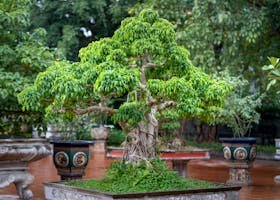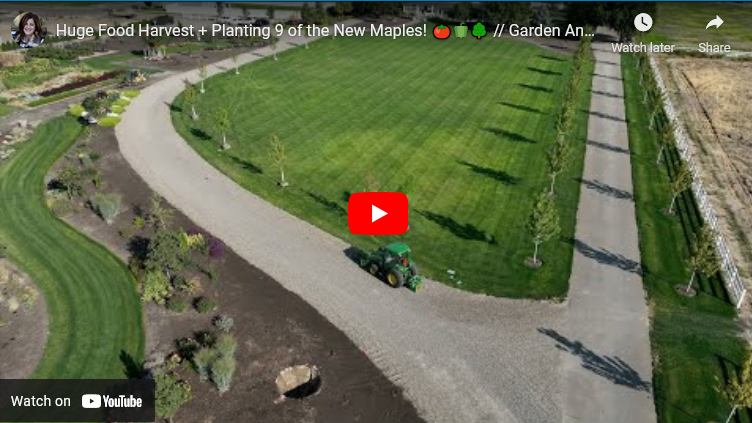Our Shared Journey Begins
We all want plants that look neat, stay healthy, and give steady blooms or fruit. In other words, we want our gardens to grow with purpose. Shaping and pruning help us reach that goal. Together we will walk through clear steps, easy tools, and smart timing. By the end, you will hold the know-how to guide any branch with calm confidence.
Why We Prune and Shape
Pruning sounds fancy, but it is just guided cutting. We snip for three main reasons:
- Health. We remove weak, dead, or sick parts. This lets strong parts thrive.
- Form. We train each stem to grow in a shape that suits our space.
- Bloom and Fruit. We boost light, air, and energy to buds. This helps flowers pop and harvests pile up.
Instead of seeing pruning as harm, think of it as care. After more than one trim, you will notice thicker leaves, brighter blooms, and sturdier trunks.
Setting Clear Goals Before the First Cut
Every plant carries its own habits. A lilac wants open centers, while a tomato needs side shoots trimmed. We first ask, “What do we want this plant to do?” Then we match our cuts to that dream.
- Shape goals. Keep a shrub low, arch a tree limb over a bench, or weave a vine along a fence.
- Health goals. Clear crowded stems, stop branch rub, or remove storm damage.
- Production goals. Push roses to repeat-bloom, coax apple trees into spur growth, or spur more basil leaves for pesto.
Write your goals on a small card or note app. Hold them next to the plant. This quick habit keeps every snip on track.
Gathering Simple, Trusty Tools
You do not need a shed full of gadgets. A few sharp, clean tools will take you far.
| Tool | Best Use | Tip for Care |
|---|---|---|
| Hand pruners | Cuts under ½ inch | Wipe blades with alcohol after each plant |
| Bypass loppers | Cuts up to 1 ½ inches | Sharpen yearly with a file |
| Folding saw | Branches over 1 ½ inches | Keep dry; oil lightly after use |
| Hedge shears | Long, even hedges | Tighten pivot screw if blades spread |
| Gloves | Grip and safety | Wash and dry to avoid mold |
Sterilize blades between plants to stop disease spread. A quick swipe with rubbing alcohol works well.
Timing Is Our Best Friend
Cutting at the right time means faster healing and bigger gains.
- Late winter. Most deciduous trees and summer-blooming shrubs love a late-winter trim. Cuts heal as spring sap rises.
- Right after bloom. Spring-blooming shrubs set new buds soon after they flower. Trim them right after the last blossom drops.
- Mid-season pinch. Herbs and annuals respond to gentle pinching through the growing months. This keeps growth full and bushy.
- Dormant mid-summer. Many evergreens can take a light shear in mid-summer. New growth has time to harden before frost.
Use a wall calendar or digital planner. Mark short reminders such as “prune hydrangea now” or “pinch petunias weekly.” Small notes save big headaches.
Learning the Four Basic Cuts
We use only four cut types in most gardens. Master these, and the rest feels natural.
- Heading Cut
- We shorten a stem by cutting above a bud.
- Result: new shoots sprout below the cut, making the plant bushier.
- Thinning Cut
- We remove a branch at its point of origin.
- Result: the plant stays open and airy, with less total bulk.
- Pinching
- We use fingers to nip soft tips.
- Result: herbs and annuals branch out and delay flowers, giving more leaves.
- Shearing
- We trim many stems at once, often with hedge shears.
- Result: a smooth, shaped surface, good for hedges and topiary.
Place each cut roughly ¼ inch above a bud that faces the way you want new growth to go. Bud direction guides future shape.
Shaping Young Trees: Building Strong Frameworks
A young tree is like wet clay. We can mold its main scaffold early.
Year One
- Pick the strongest, straightest central stem.
- Remove side branches that sit lower than knee height. This sets the trunk line.
Years Two to Four
- Select three to five well-spaced branches around the trunk. These become the main scaffold.
- Remove any limbs that cross, rub, or shoot straight up from main branches.
Years Five and Beyond
- Transition to light annual pruning. Remove weak wood and water sprouts.
- Thin interior growth so light can reach every leaf.
This slow, steady plan prevents large, risky cuts later. Instead of fighting grown limbs, we guide growth while wood is small and pliable.
Training Shrubs for Density and Shape
Shrubs give us structure along paths, property lines, and beds. When we prune with a steady hand, we gain lush screens and tidy mounds.
- Renewal pruning. Each winter remove one-third of the oldest stems down to the ground. Fresh, young stems will replace them.
- Rejuvenation pruning. For old, tired shrubs, cut all stems to 6–12 inches above soil at once. This bold step works best for fast growers like forsythia.
- Formal shaping. Shear hedges in slight trapezoids—wider at base, narrow at top—so lower leaves get sunlight.
We avoid heavy shearing of flowering shrubs like lilac or mock orange. Shears remove buds by the handful. Instead, use thinning cuts and let the shrub show its natural grace.
Refreshing Flowering Perennials
Perennials such as coneflower, salvia, and yarrow bloom better when we trim smart.
- Deadheading. Remove spent blooms before they set seed. This directs energy to root and leaf growth or a fresh flush of blooms.
- Chelsea chop. Around late May, shear leggy perennials like asters by one-third. Plants grow shorter, sturdier, and bloom a bit later but more fully.
- Division pruning. Every three to five years, dig and split overcrowded clumps. Remove woody centers and replant crisp outer fans.
After more than one season, you will see fuller beds with longer bloom windows.
Controlling Vines and Climbers
Vines race upward. If we blink, they may smother gutters or strangulate trees.
- Direct the leaders. Tie the main stems to wires or a trellis. Keep the angle gentle to avoid kinks.
- Remove suckers. Many climbers send out thin, weak shoots. Snip them early.
- Cut back hard. Fast vines like wisteria need a two-step yearly plan. In midsummer, cut growth to six buds from the base of each shoot. In winter, cut again to two buds.
This rhythm balances lush greenery with clear structure.
Caring for Edibles: Fruit Trees, Berries, and Vegetables
Food crops reward timely pruning with flavor on the plate.
Fruit Trees
- Open center for stone fruit. Peaches and plums like a bowl shape. Remove the central leader and promote three main arms.
- Modified central leader for apples. Keep one main trunk with tiers of branches in spiral layers.
- Remove inward-facing shoots. This boosts air flow and reduces disease.
Berry Shrubs
- Raspberries. After harvest, remove canes that fruited. Train new canes on wires for next year.
- Blueberries. Each winter remove any stem older than six years. Older stems turn woody and leaf out poorly.
Tomatoes and Peppers
- Tomatoes. Pinch side suckers below the first fruit cluster on indeterminate varieties. This focuses energy on fruit, not foliage.
- Peppers. A light early pinch at six inches tall encourages bushier plants.
Timely pruning lets light reach fruit. Sunlight builds sugars. We taste the difference.
Tackling Overgrown or Neglected Plants
We all inherit a wild corner sooner or later. Instead of panic, we take a method called staged pruning.
- Year One: Remove dead, diseased, and crossing branches.
- Year Two: Thin crowded growth by one-third.
- Year Three: Shape the rest to desired height and spread.
By spreading work, we avoid shock and keep enough leaves for photosynthesis each year. Plants regain vigor without sudden bald spots.
Pruning for Health and Safety
Fallen limbs and heavy snow loads can turn a dream yard into a hazard. We prune preventively.
- Remove weak crotch angles. Branches meeting the trunk at less than 45 degrees split easily.
- Clear sightlines. Trim shrubs along driveways and paths so drivers and walkers stay safe.
- Lift low limbs. Remove branches that hang too close to roofs or power lines.
Safety cuts protect people, buildings, and the plants themselves.
Common Mistakes and How We Avoid Them
| Mistake | Outcome | Simple Fix |
|---|---|---|
| Cutting flush to trunk | Slow healing | Leave a small collar to seal over |
| Leaving stubs | Rot invites pests | Make clean cuts just outside the collar |
| Shearing flowering shrubs in winter | No blooms next spring | Prune right after bloom, use thinning cuts |
| Over-pruning evergreens | Sparse regrowth | Limit cuts to fresh green tips |
| Using dull tools | Ragged wounds | Sharpen blades twice a year |
We can dodge these errors with sharp blades, clean timing, and clear goals.
Building a Year-Round Pruning Calendar
A simple calendar keeps us steady. Here is a sample plan for one temperate zone:
- January–February: Prune apple trees, grapes, and roses.
- March: Finish late-winter cuts on shade trees before buds swell.
- April: Pinch early herbs. Remove winter damage on evergreens.
- May: Chelsea chop tall perennials. Stake peonies.
- June: Shear hedges lightly. Thin fruit on branches.
- July: Cut back spent lavender. Prune rambling roses after bloom.
- August: Trim summer-flowering shrubs after the last flush.
- September: Clean up berry canes. Stop heavy pruning to avoid tender regrowth.
- October: Remove dead limbs that could fall in winter storms.
- November–December: Sharpen tools, oil handles, and plan next year.
Adjust dates to your climate, but keep the flow. Regular, gentle care beats rushed hack-jobs.
Recording Progress: The Gardener’s Logbook
Write short notes after each session. Jot date, weather, plant name, cuts made, and why. Photos help too. Over seasons, the log becomes a trusted guide. You will see patterns—maybe your maple bleeds sap if cut in March but not in July. That knowledge is gold.
Gaining Confidence Through Practice
Pruning can feel scary. Yet each small, correct cut builds courage. Start with easy tasks like deadheading daisies or pinching basil. Move to thinning a spirea, then shaping a young tree. Celebrate each success. We grow as our gardens grow.
The Many Rewards of Thoughtful Pruning
- Healthier Plants. Open canopies breathe. Diseases drop. Pests lose hiding spots.
- Greater Beauty. Clean lines and balanced shapes please the eye.
- Bumper Harvests. Fruit swells larger, herbs stay leafy, and flowers bloom in waves.
- Saved Space. Shaped plants fit patios, balconies, and narrow beds.
- Peace of Mind. Safe, tidy branches lessen storm worry.
Pruning is not just cutting. It is mindful tending. It is a pact between you and each plant. We guide, and in return, the garden thrives.
Cultivated Horizons Ahead
We began with simple aims: healthy, beautiful plants that fit our lives. Step by step, we learned tools, timing, and cut types. We saw how shaping young trees now saves pain later, how thinning shrubs invites light, and how a quick pinch plants the seed for full harvests. Most of all, we learned that each snip is an act of care.
Carry this knowledge into your next sunny morning. Walk among your beds, shears in hand, goals in mind, and trust in your growing skill. Together, we will guide every branch toward its best form and foster gardens that stand as living proofs of patience, insight, and shared joy.




